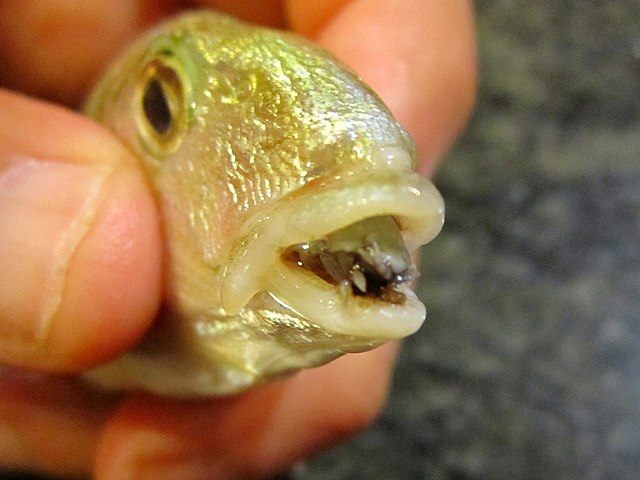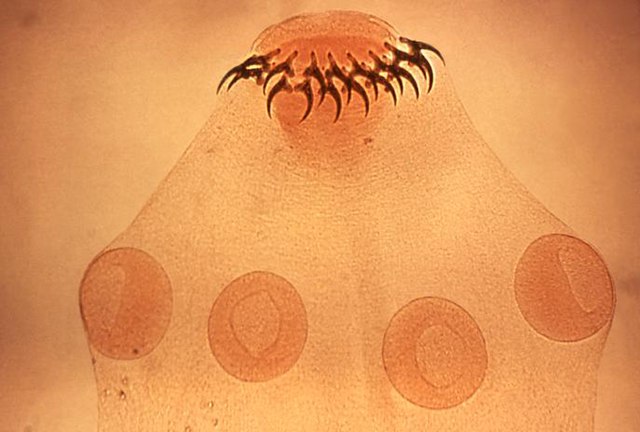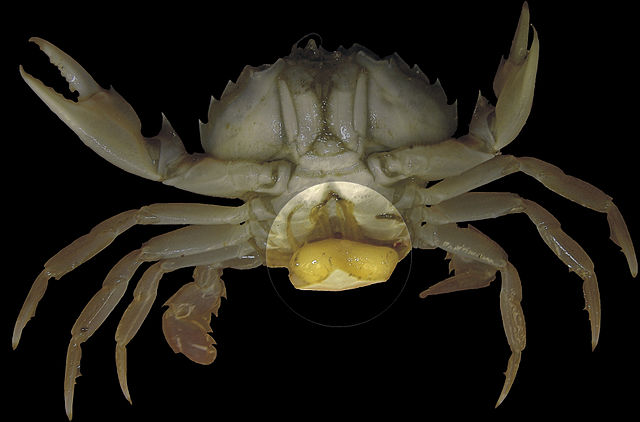Leeches are segmented parasitic or predatory worms that comprise the subclass Hirudinea within the phylum Annelida. They are closely related to the oligochaetes, which include the earthworm, and like them have soft, muscular segmented bodies that can lengthen and contract. Both groups are hermaphrodites and have a clitellum, but leeches typically differ from the oligochaetes in having suckers at both ends and in having ring markings that do not correspond with their internal segmentation. The body is muscular and relatively solid, and the coelom, the spacious body cavity found in other annelids, is reduced to small channels.
Image: Sucking leech
Image: Europäischer Platt Egel cropped
Haemadipsa zeylanica, a terrestrial leech
Fossil of a worm that was once considered as leech but denied, from the Waukesha Biota, in the Silurian of Wisconsin
Parasitism is a close relationship between species, where one organism, the parasite, lives on or inside another organism, the host, causing it some harm, and is adapted structurally to this way of life. The entomologist E. O. Wilson characterised parasites as "predators that eat prey in units of less than one". Parasites include single-celled protozoans such as the agents of malaria, sleeping sickness, and amoebic dysentery; animals such as hookworms, lice, mosquitoes, and vampire bats; fungi such as honey fungus and the agents of ringworm; and plants such as mistletoe, dodder, and the broomrapes.
A fish parasite, the isopod Cymothoa exigua, replacing the tongue of a Lithognathus
Head (scolex) of tapeworm Taenia solium, an intestinal parasite, has hooks and suckers to attach to its host
The parasitic castrator Sacculina carcini (highlighted) attached to its crab host
Human head-lice are directly transmitted obligate ectoparasites








